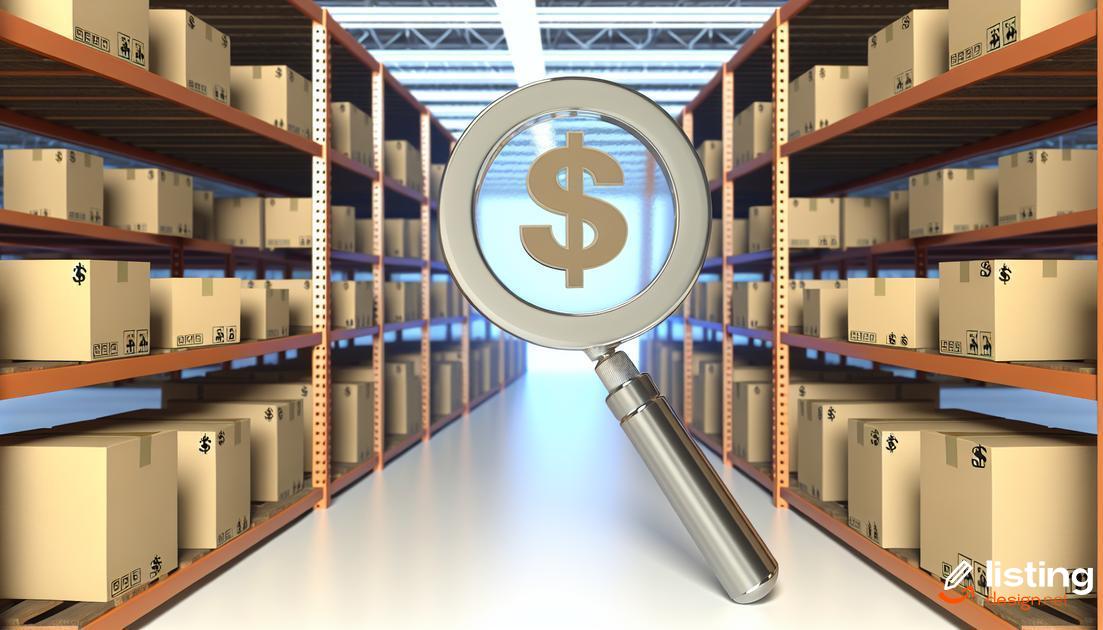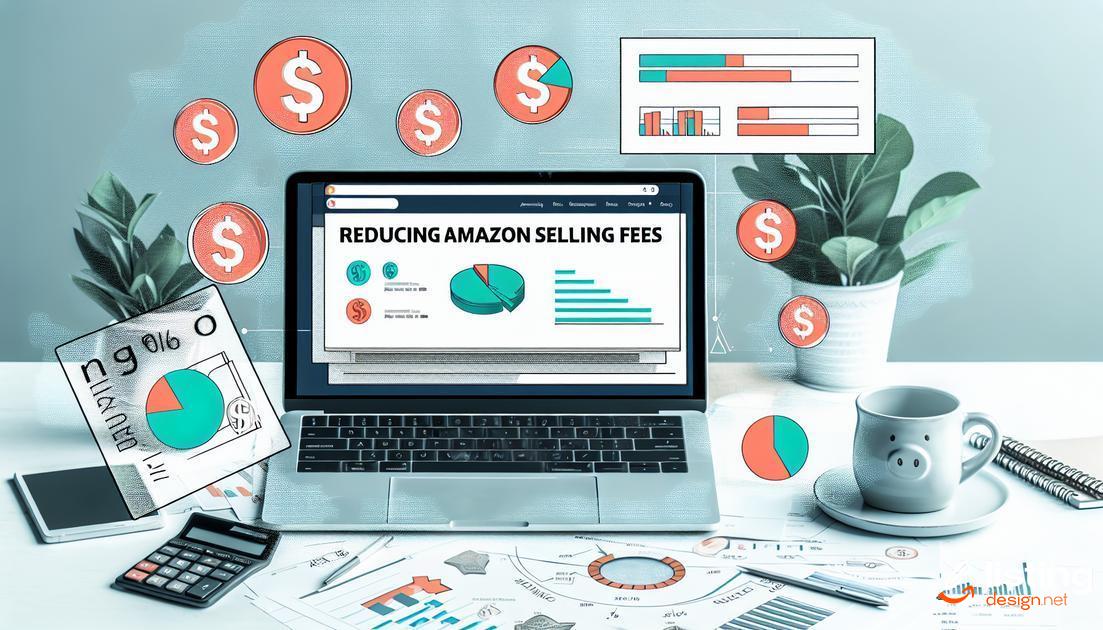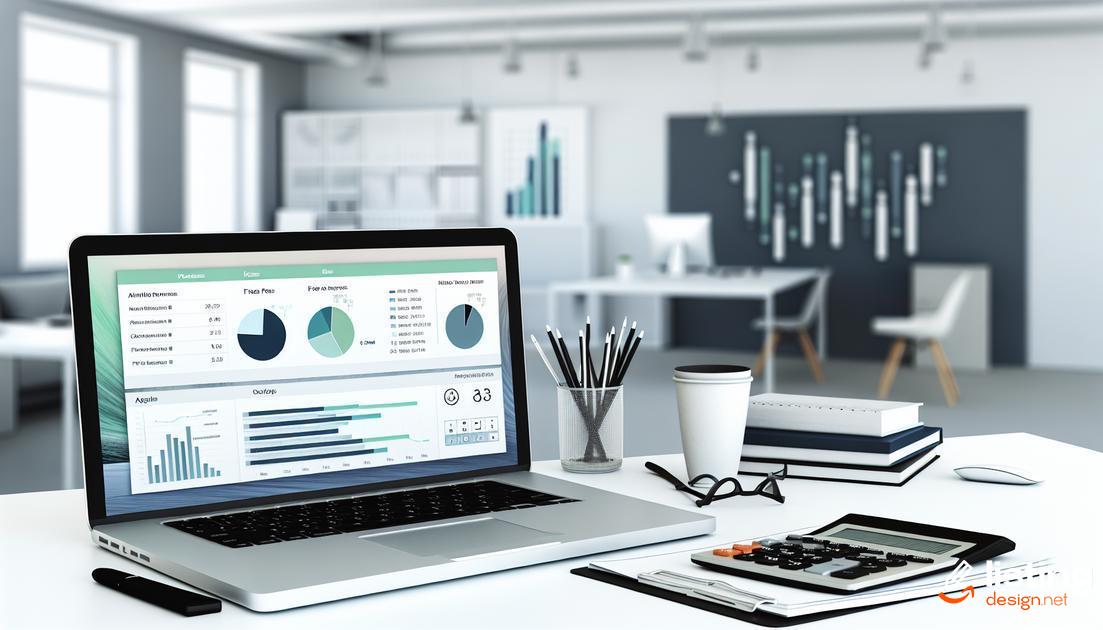Selling on Amazon can be highly lucrative, but understanding the associated fees is crucial for maximizing your profit margins. This guide on Amazon selling fees provides in-depth knowledge of various costs, from referral fees to subscription plans. Stay tuned as we dissect each fee type, offer tips to minimize costs, and introduce tools to help you succeed as a seller. This comprehensive resource aims to answer all your queries and help you navigate the fee structure confidently.
Table of Contents
Understanding Amazon’s Referral Fees
Amazon’s referral fees are a significant part of your overall selling costs on the platform. These fees vary depending on the product category and are calculated as a percentage of the total sales price, including the item price and any shipping or gift-wrapping charges.
Key Points to Consider:
- Fee Structure: Different categories have different referral fee percentages. For example, electronics might have a different fee compared to apparel or books.
- Percentage Range: Typically, referral fees range from 6% to 45%, but the average falls between 8% to 15%. Always check Amazon’s current fee schedule for the most accurate information.
- Minimum Fees: Some categories have a minimum referral fee. For instance, if the calculated fee is less than the minimum amount, you will be charged the minimum fee instead.
Understanding these fees helps you price your products effectively and maintain healthy profit margins. Use Amazon’s Revenue Calculator to estimate the fees for your products.
FBA vs. FBM: Which Is More Cost-Effective?

When choosing between Fulfillment by Amazon (FBA) and Fulfillment by Merchant (FBM), the cost-effectiveness largely depends on your business model and sales volume. Both FBA and FBM have their own sets of fees and advantages, and understanding these can help you decide which is the best fit for your needs.
With FBA, Amazon takes care of storing, packaging, and shipping your products. This service is incredibly convenient and can lead to higher sales due to Amazon’s vast logistics network. However, it comes with storage fees, fulfillment fees, and monthly inventory fees.
FBM requires you to handle storage, packaging, and shipping yourself or through a third-party logistics provider. While this method can save you on fulfillment fees, it can also require significant time and resources, especially as your sales volume grows. Additionally, sellers using FBM need to manage their own customer service and returns, which can be time-consuming.
It’s essential to consider the nature of your products. If you sell heavy or oversized items, FBM might be more cost-effective due to lower storage costs. On the other hand, if you sell small, lightweight products, FBA might be the more efficient option as Amazon’s storage and shipping costs are relatively low for such items.
Other factors to consider include your business’s ability to handle logistics, your current sales volume, and your capacity to manage customer service. Conduct a thorough cost analysis to determine which fulfillment method aligns best with your financial goals and operational capabilities.
Subscription Fees: Individual vs. Professional Plans
When choosing between Individual and Professional plans, it’s crucial to consider your selling volume and business goals. The Individual plan is suitable for those who are starting out or selling fewer than 40 items per month. You will pay a $0.99 fee per item sold, making it cost-effective for low-volume sellers.
On the other hand, the Professional plan charges a flat monthly fee of $39.99 but comes with several advantages. You won’t incur the per-item fee, which is beneficial for high-volume sellers. This plan also offers access to advanced selling tools, including bulk listings and inventory management.
Ultimately, the plan you choose should align with your business needs and sales forecasting. Understanding the differences can help you save significantly and better manage your Amazon selling fees.
Hidden Costs: Storage and Fulfillment Fees

When selling on Amazon, it’s crucial to understand the hidden costs associated with storage and fulfillment fees. Amazon’s Fulfillment by Amazon (FBA) program can be a double-edged sword. While it offers convenience and potentially higher sales, it comes with significant fees for storing and managing your inventory.
Storage fees are particularly important during peak seasons, like the holidays. Monthly inventory storage fees are charged based on the volume of your products. Items stored for over a year incur long-term storage fees, which can escalate quickly.
Fulfillment fees cover the picking, packing, and shipping of your items. These fees depend on the size and weight of each item. Small and light items have lower fees, but larger or heavier products can be costly.
To manage these costs, monitor your inventory levels diligently and use Amazon’s inventory planning tools. Consider removing slow-moving items or using third-party logistics (3PL) services to balance storage between Amazon warehouses and external sites.
How to Calculate Your Profit Margin Accurately
To accurately calculate your profit margin, first gather all necessary fee data. Consider Amazon’s referral fees, variable closing fees, and any shipping fees if utilizing FBA (Fulfillment by Amazon). Next, account for cost of goods sold (COGS), which includes the purchase price of your products and any associated shipping costs.
Subtract your total costs (fees and COGS) from your revenue to determine your net profit. To find your profit margin percentage, divide your net profit by your revenue and multiply by 100. For increased accuracy, regularly update this calculation to reflect any changes in Amazon fees or your COGS.
Using tools like Amazon’s fee calculator can provide real-time fee estimates and help streamline this process. Make sure to also include any additional costs such as storage fees, which can add up if your inventory turnover is low.
Tips for Reducing Amazon Selling Fees

Reducing your Amazon selling fees can significantly increase your profit margins. Here are some effective strategies:
- Optimize Product Pricing: Strategically setting your product price can help you stay competitive and reduce fees indirectly. Consider the referral fee percentages to find a sweet spot.
- Choose the Right Fulfillment Method: Compare FBA and FBM to see which is more cost-effective for your business. Sometimes, shipping yourself can save costs, while other times, FBA offers better scalability at lower fees.
- Monitor Storage Fees: Long-term storage fees can add up quickly. Keep your inventory moving to avoid these costs. Utilize the Inventory Age and Excess Inventory reports in Seller Central to manage your stock effectively.
- Use Advertising Credits and Promotions: Take advantage of any advertising credits and promotional discounts offered by Amazon. This can boost your sales without increasing your costs significantly.
- Analyze Fee Reports: Regularly review your Fee Preview Report to understand where most of your money is going. Adjust your strategies based on these insights.
By implementing these tips, you’ll be able to manage and potentially lower your Amazon selling fees, leading to better profit margins.
Common Mistakes Sellers Make with Fees
One common mistake sellers make is not fully understanding Amazon’s fee structure. Many sellers underestimate the impact of these fees on their profit margins. For instance, neglecting to account for referral fees and closing fees can lead to unexpected expenses.
Another frequent error is improper product categorization. Products listed in the wrong category might incur higher fees. Always double-check the category-specific fees to avoid surprise charges.
Sellers often overlook the importance of maintaining good inventory health. Storing products for too long in Amazon’s warehouses can lead to increased storage fees. It’s crucial to monitor your inventory regularly and manage stock levels effectively.
Failing to use accurate product dimensions and weights can also result in higher fees. Misreporting these details may lead to additional fulfillment fees, as Amazon relies on precise measurements for their fee calculations.
Additionally, some sellers ignore the benefits of opting for the professional selling plan. While it comes with a monthly subscription fee, it offers lower per-item fees, which can be more cost-effective for high-volume sellers.
Finally, not taking advantage of available tools and resources can hinder your ability to manage fees effectively. Free tools and apps designed to track and manage seller fees can provide valuable insights and help you optimize your profit margins.
Free Tools to Track and Manage Fees Efficiently

Tracking and managing fees on Amazon can be complex, but using free tools can simplify this process. Seller Central Reports provide detailed breakdowns of your fees, helping you understand where your money goes. Use these reports regularly to stay updated on any changes in fee structures.
Amazon Fee Calculator is another essential tool. It allows you to input different product scenarios to see how fees affect your profit margins. This tool is especially useful for testing new products or adjusting prices.
Google Sheets with the Amazon MWS API integration can help you create custom tracking solutions. By setting up automated data pulls, you can visualize your fees and profits in real-time. This can be particularly helpful for sellers managing multiple product lines.
Profit Bandit is a mobile app designed to help you quickly analyze products on the go. While typically used for scanning items, it also provides instant fee calculations. This can be a game-changer when making purchasing decisions.
Lastly, Helium 10’s Free Plan offers a suite of tools, including fee tracking features. While their premium plans offer more functionality, the free version still provides valuable insights to help you manage your fees effectively.
Implementing these free tools will help you keep a close eye on your fees, ultimately aiding in maximizing your profit margins.


